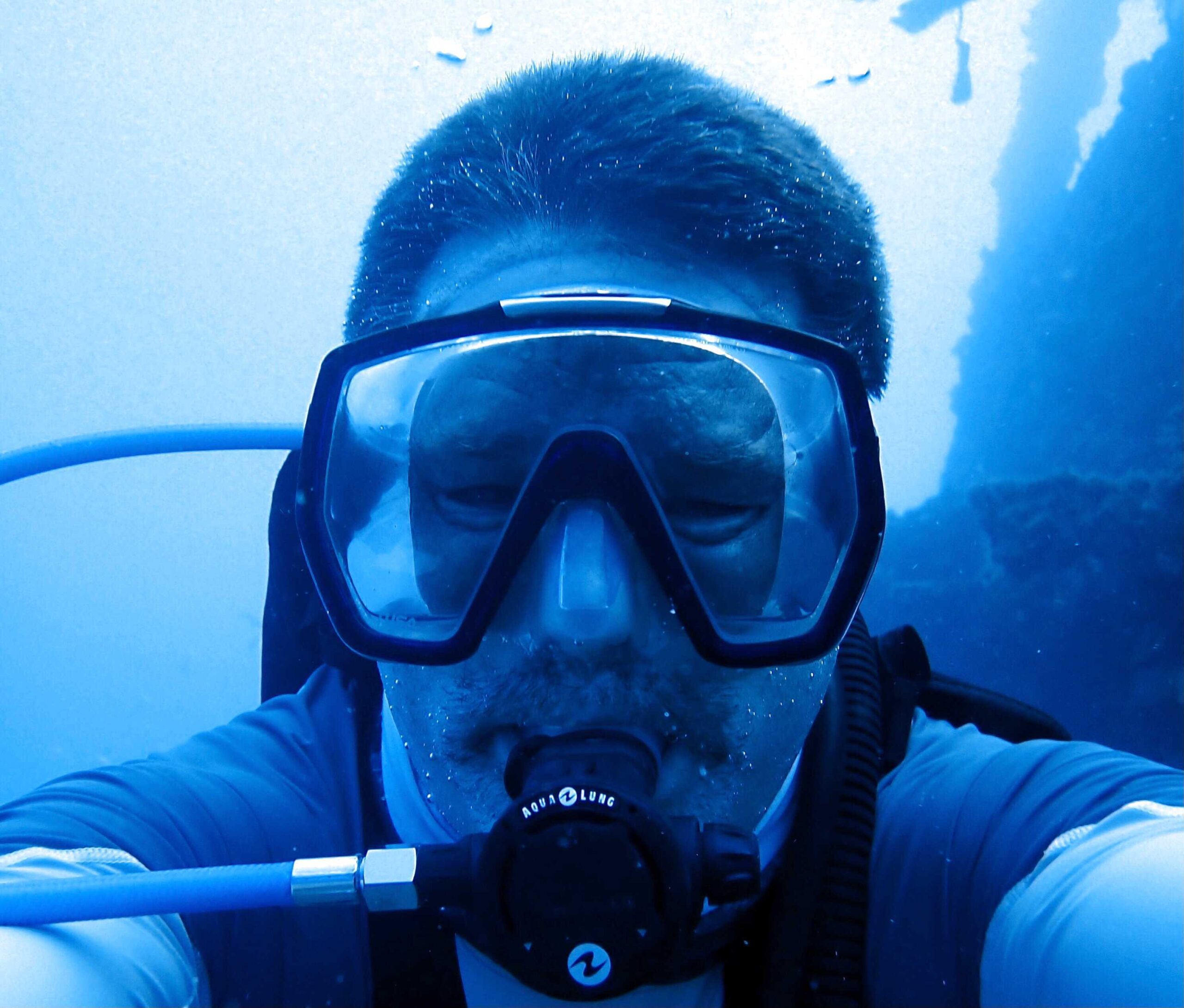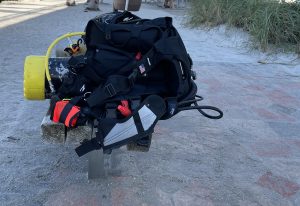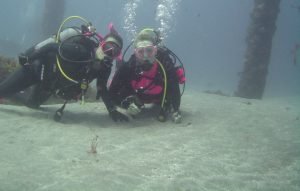No products in the cart.
Discover the Meaning and History of SCUBA

Have you ever craved a peek into the ocean’s hidden world? Ever wondered what it’s like to breathe underwater and explore like a marine detective? Hold on before you grab your mask and fins! You might not even know what SCUBA stands for. Let’s take a look at a brief history of SCUBA and how you can get involved.
What Does SCUBA Stand For?
Nope, it’s not just a fancy word for underwater breathing. SCUBA stands for Self-Contained Underwater Breathing Apparatus. SCUBA gear, when properly used, lets you roam freely beneath the waves! But how did this incredible technology come to be? Get ready to plunge into the fascinating history of SCUBA, a journey filled with brilliant inventors, daring explorers, and some seriously mind-blowing gadgets you won’t believe existed.
A Brief History of SCUBA

Imagine: underwater battles, covert ops, and daring escapes – all happening silently beneath the waves. This wasn’t Hollywood, it was the reality of World War II, where the need for underwater warfare pushed diving tech to its limits. Enter the frogmen, elite Navy divers tasked with sabotage and recon, but limited by clunky breathing gear. The US Navy knew they needed something better, something stealthy and long-lasting.
Cue the oxygen rebreather: a game-changer that recycled air, letting frogmen stay submerged for hours. No more noisy bubbles giving away their position! Dr. Christian Lambertsen’s “Lambertsen Amphibious Respirator Unit” (LARU) was the first hero. It was a small compressed oxygen tank and a carbon dioxide scrubber that gave frogmen the freedom to move like underwater ninjas.
This revolutionary tech earned a new name: SCUBA – Self-Contained Underwater Breathing Apparatus. It perfectly captured the essence of this closed-circuit system, a diver’s personal mini-ocean backpack! So, while SCUBA wasn’t born on a beach with sunshine and coral reefs, its origins in the shadowy depths of warfare paved the way for the underwater exploration we enjoy today.
From War Hero to Ocean Explorer
SCUBA’s potential didn’t end with the war. Adventurous pioneers like Jacques Cousteau saw its potential for diving beyond military applications. Cousteau, a French naval officer and filmmaker, co-developed the Aqua-Lung, an open-circuit version of the SCUBA that used compressed air tanks instead of pure oxygen. This made diving more accessible and affordable, opening the underwater world to a wider audience.
The Golden Age of Scuba
The 1950s and 60s witnessed a surge in recreational scuba diving. Popular television shows like “Sea Hunt” and “Flipper” fueled the fascination with the underwater world. People craved to experience the weightlessness, the vibrant coral reefs, and the exotic marine life they saw on their screens. Diving schools sprouted up, and tourism companies began offering underwater adventures in tropical destinations.
SCUBA Today
Today, SCUBA diving is a thriving sport and recreational activity enjoyed by millions worldwide. From exploring shipwrecks to swimming with dolphins, the possibilities are endless. Modern equipment is lighter, more comfortable, and safer than ever before, making diving accessible to a wider range of people.
So, the next time you strap on your SCUBA gear and plunge into the depths, remember the remarkable journey it took to get there. From the ingenuity of wartime inventors to the adventurous spirit of pioneers like Cousteau, SCUBA’s legacy is a testament to human innovation and our enduring love for the ocean’s mysteries.
SCUBA and YOU

Now that you know a little of the history of SCUBA, let’s talk about how you can get involved and explore the underwater world.
If you’ve ever dreamt of soaring through coral cities bursting with neon fish? Imagine unraveling the secrets of sunken shipwrecks whispered by the ocean currents? SCUBA isn’t just a hobby; it’s a door to a whole new world beneath the waves, teeming with life, mystery, and adventure!
Ready to trade land legs for fins and explore this hidden realm? Getting certified is easier than you think! Thanks to scuba diving courses offered worldwide, the underwater playground is closer than ever.
Think of your certification as an underwater driver’s license. You’ll master the basics: how to stay afloat like a weightless astronaut, communicate with hand signals that would make dolphins jealous, and manage your gear like a pro. It’s all about safety and fun, with classroom sessions, pool practices, and finally, epic open water dives where you put your skills to the test.
Want all the nitty-gritty details about SCUBA certifications? Dive into our guide “What You Need To Know Before Your PADI Open Water Certification” and get ready to unlock the magic of the underwater world!
Wrap Up
Ocean whispers secrets. Vibrant coral castles, playful dolphins, forgotten shipwrecks… all just out of reach. What if you could dive in, become fluent in the ocean’s language? SCUBA isn’t just a hobby, it’s a superpower. Get certified, unlock ocean magic. Ditch landlubber life, embrace adventure. Dive in, be the envy. The ocean whispers your name. Will you answer?
Once you’ve successfully completed the certification process, and collected your certification card, you can begin to roam the ocean. Your C-Card is your passport to explore the world’s most incredible underwater destinations, from the colorful coral reefs of the Caribbean to the beautiful sights of the Blue Heron Bridge.

Join Our Mailing List For New Scuba Divers
If you like this tip for new scuba divers, join our mailing list. You’ll get a new tip delivered to your inbox each week. Learn to dive confidently!